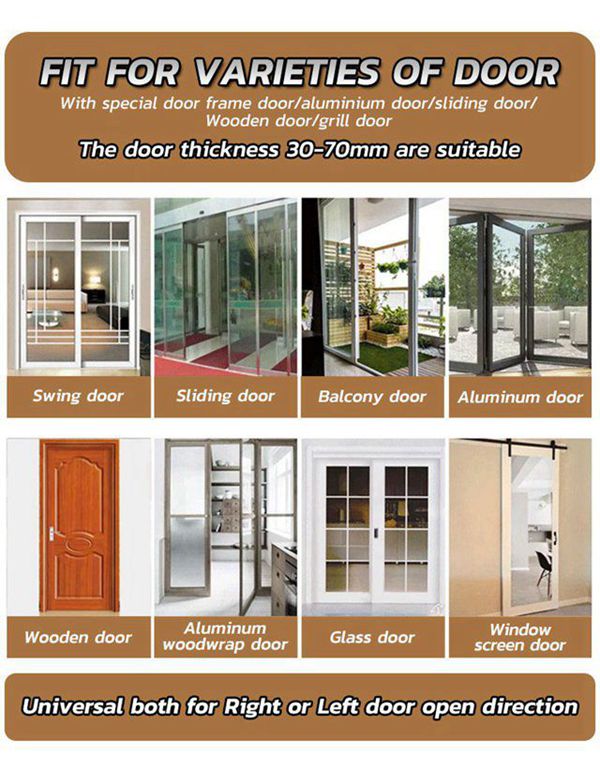As smart locks continue to grow in popularity, they are becoming a preferred choice for homeowners interested in both style and security. While a few newly constructed homes come with smart locks, most homeowners need to purchase and install them separately—especially for older doors with traditional mechanical locks.
For many, converting an old door to a smart lock is the most practical and budget-friendly option. However, before making a purchase, it’s essential to consider two critical factors: the material of the door and the type of existing lock. Here’s a guide to help you determine if your door can accommodate a smart lock.
1. Door Material
Installing a smart lock usually involves modifications to the original door, including some cutting or reshaping to fit the new lock system. Therefore, the thickness and material of the door are crucial considerations. Generally, most smart locks can be successfully installed on doors with a thickness of 40-90 mm. If your door is thinner or made of delicate materials like light wood, metal, or glass, it may not be structurally strong enough to support a smart lock. For instance, trying to install a smart lock on a thin door can lead to fractures or damage, making it essential to consult with the retailer or installation professional beforehand.
Certain premium door types, such as imported doors with intricate designs, may also require specialized installation that can involve irreversible modifications like removing parts of the door frame. For such doors, adding a smart lock may not be advisable unless you are prepared for permanent alterations.
2. Type of Existing Lock
The type of mechanical lock currently installed on your door can also impact smart lock compatibility. Some locks, such as “bullhead” locks or exterior-mounted edge locks, cannot be replaced with a smart lock. This is because edge locks are installed on the outer surface of the door, which makes it challenging to securely mount the smart lock mechanism. Additionally, these edge locks don’t have internal compartments suitable for fitting the smart lock’s handle and inner mechanisms, resulting in an improper or impossible installation.
For doors with narrow gaps or specialized latch systems, attempting to install a smart lock may cause issues like latch misalignment, preventing the door from closing securely. These specific lock types and door configurations tend to be more complex, making them unsuitable for conversion to smart locks without extensive adjustments.
In summary, while adding a smart lock to your home can enhance both security and style, it’s essential to ensure your door material and existing lock type are compatible. Taking the time to assess these factors before purchasing a smart lock will help you make a confident, informed choice that leads to a smoother installation and improved functionality for years to come.
Post time: Nov-13-2024





